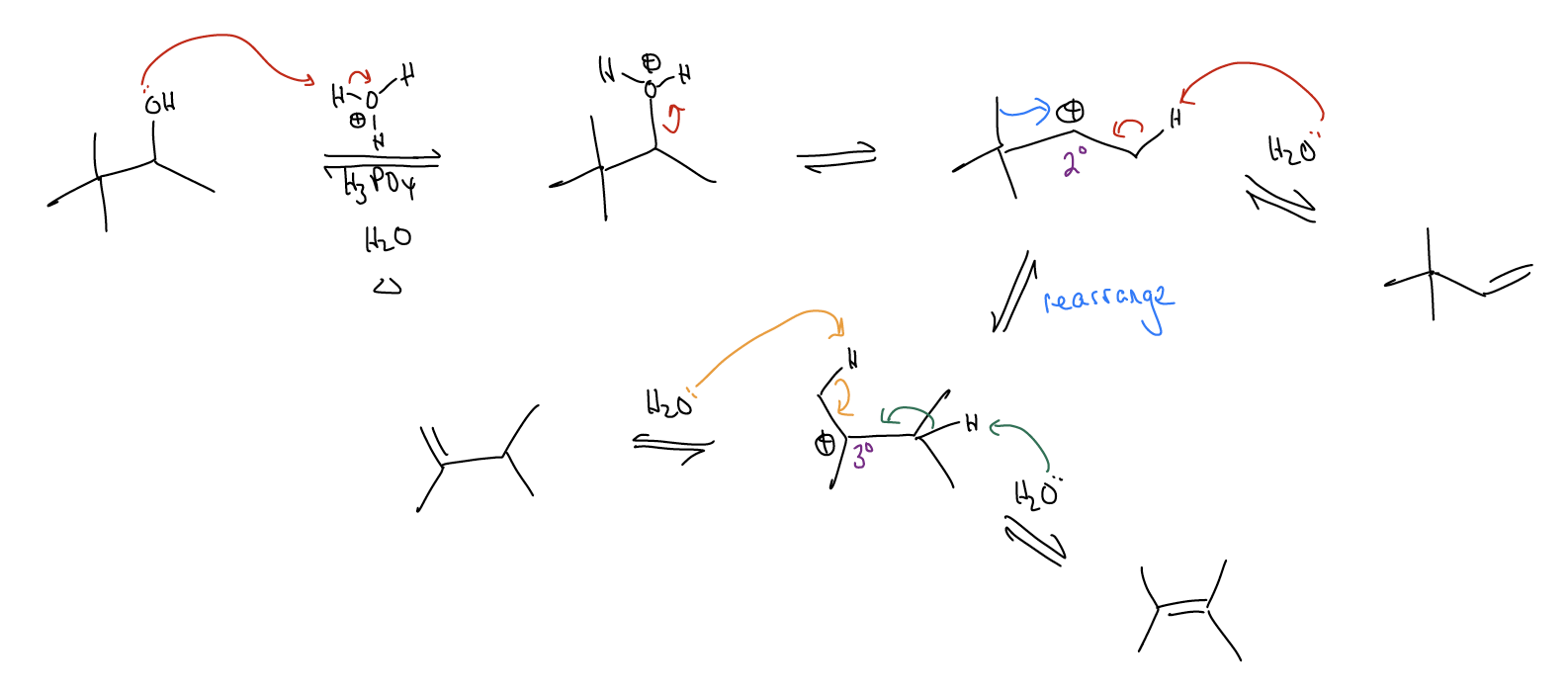9.3: Rearrangement of Carbocations
- Page ID
- 321634
Often, dehydrohalogenation or dehydration reactions result in the formation of several products. For example, while we may be able to justify the formation of the first product in the following reaction, can we draw arrows to produce the other two? Well, this would involve \(σ_{C-C}\) bond cleavage, or rearrangement of the carbon skeleton.

Rearrangements occur when the formation of a carbocation results in a reorganization of the \(σ\)-framework to generate a more stable carbocation. This occurs when \(σ\)-donation goes “too far” and the \(σ\) bond is actually broken.

Let’s take a look at the rearrangement step via a Newman projection. A \(σ_{C-C}\) bond is overlapping with the atomic p orbital. This weakens the \(σ_{C-C}\) bond so much that it actually breaks and moves over (1,2-methyl shift) to generate a new carbocation, which can then proceed to undergo other things (substitution or elimination reactions).

Normally, rearrangements occur because these shifts (1,2-methyl, 1,2-hydride, 1,2-alkyl, etc..) result in a more stable carbocation.

There are some special cases of rearrangements that we must be aware of:
Improper orbital alignment - \(σ_{C-H}\) and \(σ_{C-C}\) bonds that aren’t aligned properly with an atomic p orbital will not migrate, even if a more stable carbocation would result.

Ring expansions - \(σ_{C-C}\) bonds can migrate to form larger, more stable rings that relieves ring strain. This is known as a Wagner-Meerwein shift.

Ring contraction - \(σ_{C-C}\) bonds can migrate to form smaller rings. The best example of this is the pinacol rearrangement. The driving force for this reaction is the formation of a C=O bond (the carbocation resulting from the rearrangement is resonance-stabilized).


